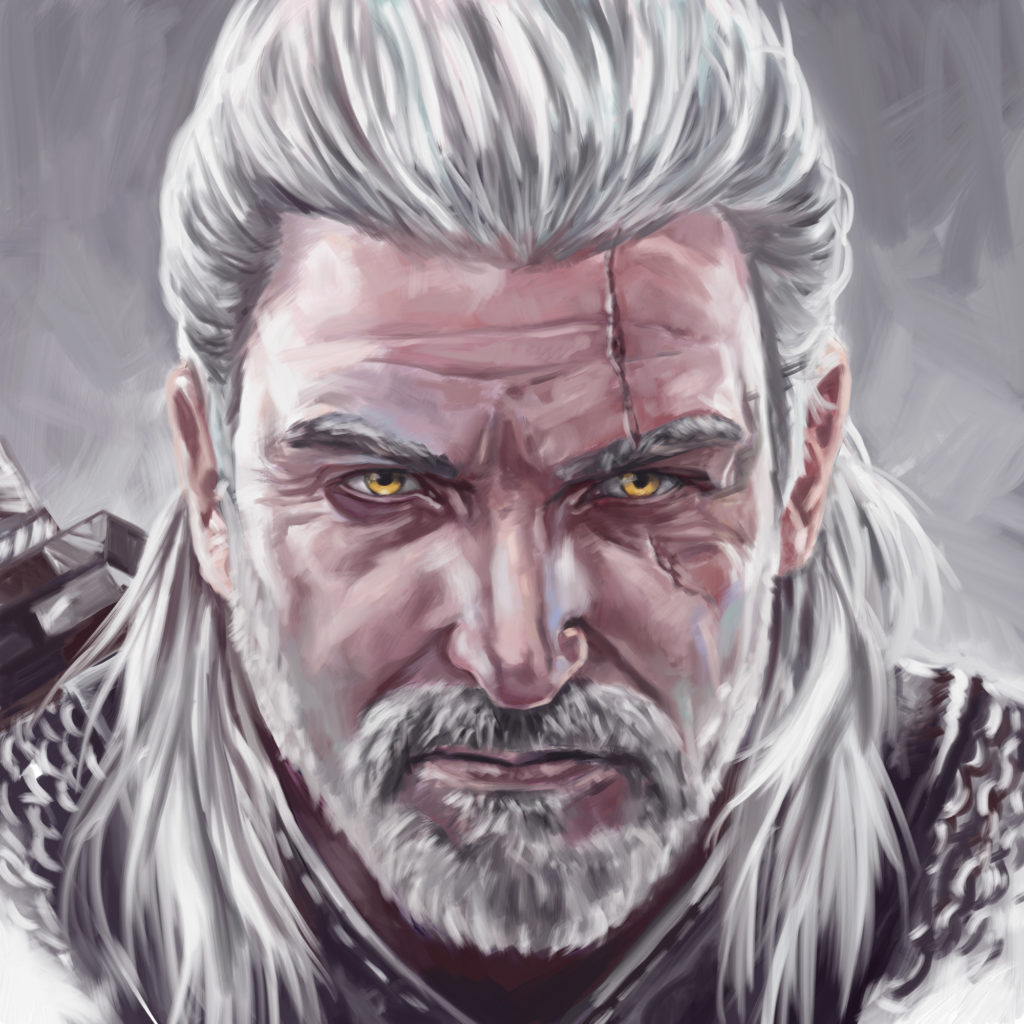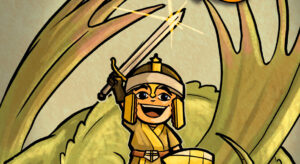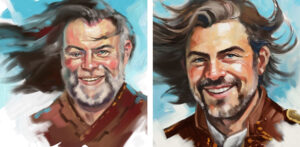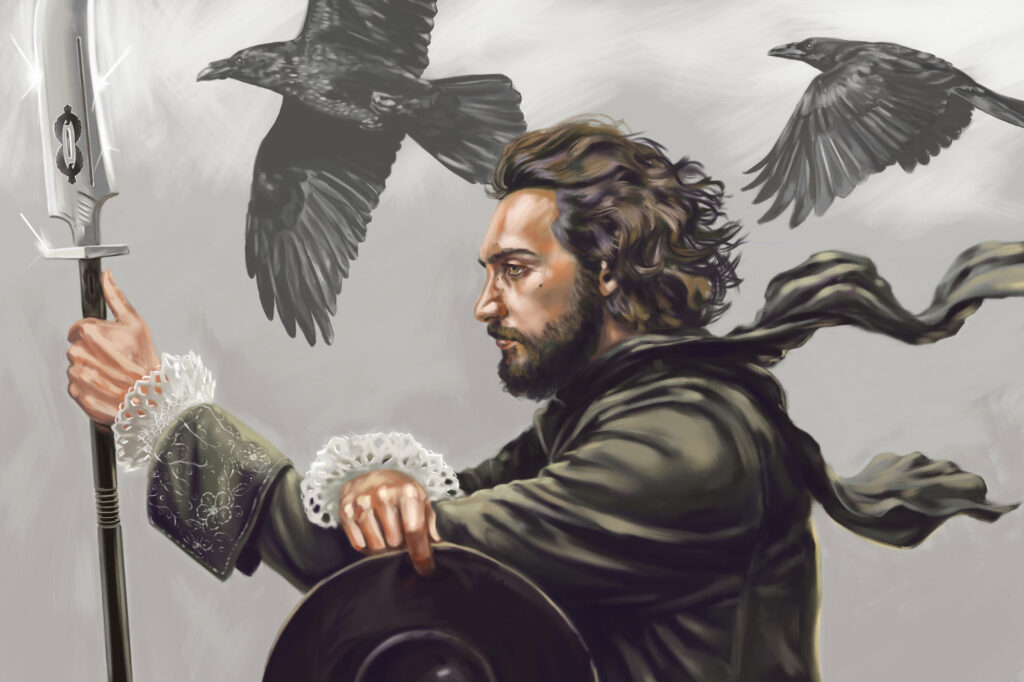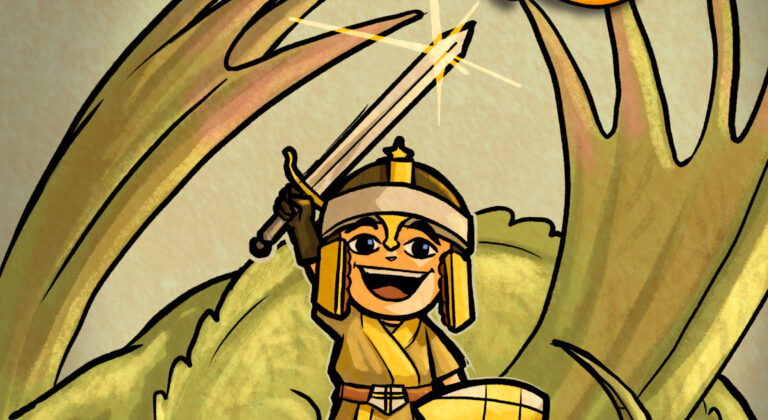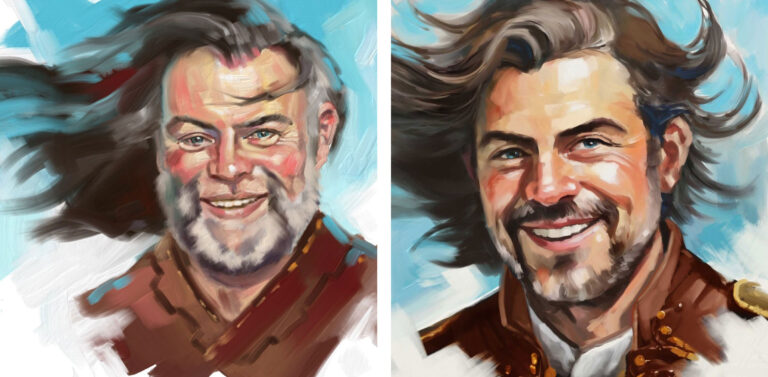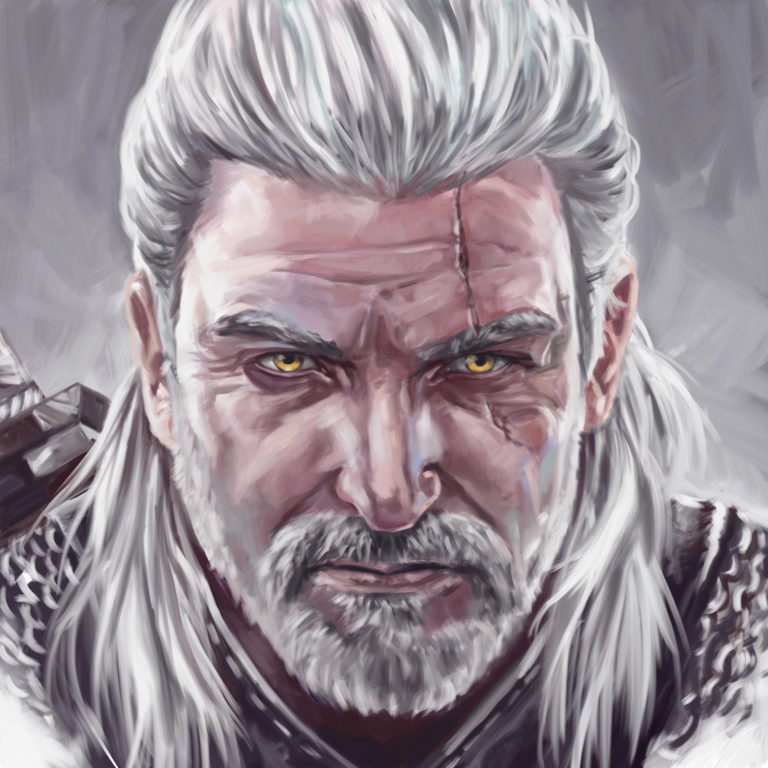Can we use AI in an ethical way as artists? Can it become a valuable tool for us under the right circumstances or is it all evil? I recently came across a video by the Corridor Crew on YouTube. https://youtu.be/H4Kqbm1WirU We Made Famous Cartoons Into REAL Humans.
This video is a year old, and you can already see how far AI has come. In the video, they created a “human” version of Geralt. You all know my process of creating fanart for WoT and Stormlight involves finding images of the actors and painting them as characters. I thought this would be a fun opportunity to turn their AI-generated “human” version of Geralt into a fanart painting which I painted using Adobe Fresco. I will include this portrait in my 100-portrait challenge! You can read more thoughts on this process here.
In conjunction with this painting project, I thought I’d share some of my pontifications on AI.
AI is on the move. It is growing in popularity and viability in the marketplace. Individuals use it to create art, writing, interactive avatars, animations etc. The tools of AI are becoming so powerful and pervasive that it’s now possible for news media to create an AI news anchor who can share the news 24/7, never tire and never falter. As an artist, writer and animator, I have found myself questioning the use of AI in these practices. I’m asking myself questions such as: Can I use this and not violate my creative code of ethics? Is AI fully negative? Is it going to kill artists, writers, animators and the like?
Currently, my stance on these questions is that, well, it’s complicated.
The technology is disruptive, no doubt. It is having an impact on the way we work. It will continue to alter our practices until it is finally adopted and integrated as a necessary knowledge base and skillset for us whether we are creatives or working in business or pretty much any industry and line of work. This toolset is robust already and shows widespread application across all areas of industry. Will this kill artists? Perhaps. There is a risk that those who refuse to learn how to leverage these systems to aid in productivity may lag behind and ultimately get left behind. On the other hand, an increase in AI-generated solutions to creative problems will only serve to accentuate the power, value and unique skillset of creators working with traditional or “long production” digital media. Artifacts produced by hand (that is to say, without leaning 100% on text-generated AI products) may become that much more valuable as the capacity to mass-produce creative products becomes accessible to anyone.
Perhaps the very nature of AI-produced content limits its value in the eyes of the consumer of creativity. Whereas traditionally painted or created products will always have a particularly unique value attributed to them due to the proximity of the act of creation to the soul of the artist. In a metaphysical sense, a hand-crafted artifact is closer to the essence of creation than an AI-generated object. For example, a painting crafted by the hand of the artist is a one-off object that carries with it the evidence of that artist’s interaction with the medium, the subject and the spirit of what has been rendered on the canvas, whether it be representational or abstract. The act of creating carries nuanced physical and extra-sensory tendencies that are unique to that creator. An AI is no longer bound to those constraints. This means that anyone, trained in art or not, can produce an image with ease through the simple entering of text prompts. But the final art is void of the physical interplay required to generate the object. This lack strips the final product of its soul because it is one step removed from the human experience.
When the camera was created, artists had a great deal of fear regarding their role in the creative process. The camera was seen as a potential artist killer. Ultimately, it has been integrated into the net of modes of creative expression available to humanity. In many ways, enhancing the act of creativity for painters, artists etc. How many artists and illustrators today use photographs as an aid and to enhance their creative practice?
I would argue that it’s possible that AI will find a similar seat in the stratosphere of the practice of creative expression. A tool to enhance creativity, not replace age-old practices tied to creativity.
In this role, it may become a common arrow in the quiver of creative companies. A tool that is useful for expediting creative processes, concepts, execution and efficiencies. However, it cannot replace the hand of the artist as they drag a brush across the canvas. Not yet, anyhow. If you look at contemporary robotics and contemplate the possibilities of marrying AI with robotics… well… perhaps in 100 years or less, this story may differ. Perhaps we aren’t far from the first commercially successful android artist or robot painter. A robotic entity or some form of hybrid bio or synthetic bio with an AI brain that operates so well it presents as a sentient being with all the hallmarks of humanity.
We are living in a tremendously fascinating time. Technology is advancing at an astounding rate. I have concluded that, as artists and creatives, we cannot ignore, argue away or stifle AI. I think we must look at responsible ways to utilize it as a tool. What does that look like? Well, until there is some regulatory consensus about the production of art, for example, we need to be diligent and purposeful in coming to some kind of conclusion in our own minds that lead us toward a healthy relationship with the technology of AI.
It seems that the art world is striving to understand the dynamics of this situation. Patrick Coyne, the editor/designer at Communication Arts, one of the world’s most influential design publications, was asked whether AI-generated art would be considered for awards or grants:
“The short answer is yes. We always tell jurors to select work based on the quality of the idea and the execution. We celebrate compelling imagery regardless of how it was created.”
Managing Editor Michael Coyne noted that Communication Arts had already featured a few campaigns that used AI-generated art “because they were interesting or appropriate applications for AI as an artistic tool rather than a medium on its own.” He cited an ad campaign by Dentsu Creative Portugal for Jardim Sonoro, an electronic music festival held in a national park near Lisbon, is an example. According to the agency’s creative directors, the challenge was to blend the musicians’ portraits with natural elements. “We learned that AI is a great tool,” they commented. “We are still at its beginning and will certainly see significant developments that will dazzle us all. But it won’t replace anyone. It needs someone to guide the creative process.” They added, “Novelty and discomfort often lead to great work.”
However, the Communication Arts team’s stance evolved a few days later. “We’ve been approached by several illustrators upset over our position regarding accepting entries for the Illustration Annual produced with text-to-image AI software,” Patrick Coyne wrote via email. “While I still see the long-term potential for AI-assisted creative exploration, I better understand the position that illustrators and photographers are currently facing with copyright infringement and the unauthorized use of their work to ‘train’ the current crop of text-to-image AI software. Consequently, we are reversing our position and will not be accepting AI text-to-image generated submissions in our Illustration competition.”
Many very well-respected creatives on Instagram strongly oppose AI for art production. I can’t say I blame them. I don’t want my work being thrown into an ai blender to create a “new” ai painting. However, I would like to have the option to use the tool in the context of a fair deal for art that is used to inform the ai. If there was a way to contribute my art to the ai supermachine for it to learn from and receive a small kickback on usage. I might consider doing that, if the return on my contribution was fair.
Some have taken it upon themselves to resist the tidal wave of AI technology. An academic research group of Ph.D. students and CS professors interested in protecting Internet users from invasive uses of machine learning at the University of Chicago have created software that creates a protective layer over the artwork. Glaze is a tool that will make it harder for AI to copy artists’ work by disrupting the AI’s ability to read and utilize imagery. They are providing this software for free in perpetuity. A noble offering and a help to artists to be sure, but I can’t help but feel that this is just a bandaid and will somehow be circumvented by AI in the future.
Adobe just released their BETA of Firefly, their version of an AI Generator tool. As a long time Adobe user, this seems intriguing. I’ve submitted my info to be included in the BETA but have not heard back yet. The Verge has a writeup about the platform.
“According to Adobe, everything fed to its models is either out of copyright, licensed for training, or in the Adobe Stock library…”
If Adobe is indeed able to provide an ai generation tool that does not breach the rights of artists, that would go a VERY long way regarding the tool’s efficacy, in my mind, at least. Perhaps this would become something artists and creatives could feel comfortable utilizing for automating simple tasks. One example of what they are working on with the toolset, which is intriguing and could be a great time saver, is a means to use text to generate editable vectors. So if, for example, I wanted a leaf for an illustration. Instead of doing the beginning drawing, I could have the generator produce something that I could then manipulate to my liking. As a professional creative, it’s hard not to want to use that to expedite the creative process in the context of commercial practice. Young creatives will be forced to embrace the technology as they enter workspaces of larger agencies and organizations that embrace the tools to expedite work and try to claim a more significant profit margin. As I have stated, I do not think we can realistically expect AI to go away. So we need to find ways to use it wisely.
Can we use AI in an ethical way as artists? Creative companies and individuals are trying to navigate this complex question with varying degrees of apathy and angst. I hope that more support for artists will develop around the technology that will, ideally, eliminate the exploitation of artists, and we can develop a healthy relationship with AI. As a tool, it has immense potential.
